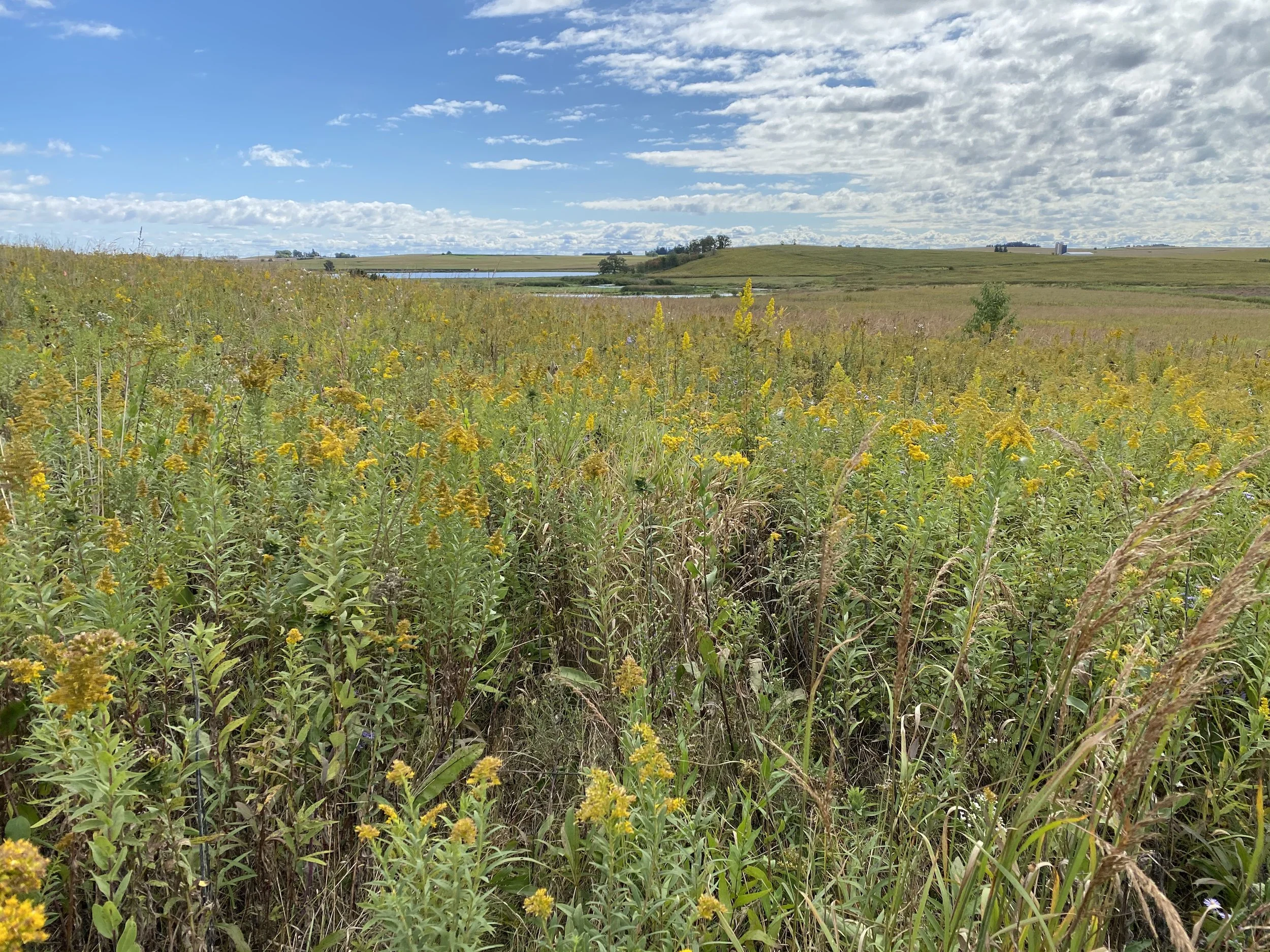Two recent experiences at Madison Audubon’s Goose Pond Sanctuary will, I hope, interest the faithful few readers of this blog.
First, I went seed collecting at Goose Pond with a focus on two goldenrods: stiff and showy. All were in abundance at a prairie that several of us collectors had sowed the seed four years earlier that transformed it from row crops to prairie. As if to remind us, the same weather prevailed on the collecting day as on the seeding day: cold with a bitter north wind. Regardless of those conditions, collecting seed on a healthy prairie that you helped create is about as cool (forgive the pun) as it gets.
The issue with collecting goldenrod is distinguishing the different species from Canada goldenrod. Canada goldenrod, oh my. It's the floral illustration of the ancient wisdom that you can have too much of a good thing. Canada goldenrod grows reliably and fends off invasive—in your face, reed canary grass. Pollinators are fond of it. But it's aggressive, has weed-like growth, and can dominate a landscape, hindering the diversity one wants in a healthy prairie. Madison Audubon almost never wants to collect or sow Canada goldenrod.
Stiff goldenrod in bloom. Photo by Peter Gorman
Stiff goldenrod seedhead. Photo by Peter Gorman
We started with stiff goldenrod, which has a pretty easy to distinguish seed head. However, after we volunteers had filled several barrels with the stiff stuff, we turned our attention to showy, which can be confused with Canada. Graham Steinhauer, Goose Pond Sanctuary land steward, conducted a brief and expert seminar on the differences between showy and Canada goldenrods. The prairies was sparse enough that the showy stuff showed up well and seemed to have its classic form. We were happily filling buckets with showy seed and leaving the Canadas to blow in the wind. We thought.
Showy goldenrod in bloom. Photo by Joshua Mayer
Showy goldenrod seedhead. Photo by Brett Whaley FCC
Madison Audubon’s land stewards like Graham and Faville Grove's Drew Harry have thousands of hours of every sort of experience on our sanctuary lands. That, in combination with their formal education, has made them experts. Graham showed that when he noticed a sneaky Canada goldenrod that was doing an excellent imitation of a showy. Every one of the distinguishing characteristics of the Canada were muted and Graham showed how easily the two could be confused. Oh, oh, I thought—that looks like… a quick search of my bucket showed I had fallen victim to the dissembling Canadian. Out went that seed head!
Canada goldenrod in bloom. Photo by Peter Gorman
Canada goldenrod seedhead. Photo by Danny Barron FCC
Later that week I was talking with a UW Madison Zoology major who was having trouble finding enough species of insects for an already tough Entomology course. With a warm weekend coming up, I thought bugs would be out in force on the Goose Pond prairies. Thanks to Susan Foote-Martin and Mark Martin, our Goose Pond Sanctuary resident managers, she was soon in touch with Graham. On Sunday I opened an email thanking Madison Audubon for the wonderful help Graham had been in welcoming her and directing her to the best spots to find a variety of insects. She's closer to finishing the assignment and Goose Pond will receive a bit more citizen science in the form of her species list.
A volunteer group collects seeds at Goose Pond Sanctuary in July 2022. Photo by Maggie Honig
A group of volunteers collects sed at Faville Grove Sanctuary in November 2020. Photo by Brenna Marsicek / Madison Audubon
While Madison Audubon has worked hard to obtain and improve 1000s of acres of land that are now brimming with beauty and native flora and fauna, these experiences remind me that Madison Audubon’s staff, past and present, have made us a healthy and productive conservation organization. I can truthfully attest that I have always witnessed Madison Audubon staff responding to volunteers and visitors with thoughtfulness and kindness.
So, here are two concluding suggestions:
We still have some seed collecting days for volunteers at both sanctuaries. Participate in one of them. You'll have a great time, do some good, and meet some of those wonderful staff members.
Secondly, you'll soon receive our year end request for donations. Those donations help us compensate those staff members fairly, a crucial step in retaining their expertise and service. Please be generous in your response.
Thank you,
Topf Wells, Madison Audubon advocacy committee chair












